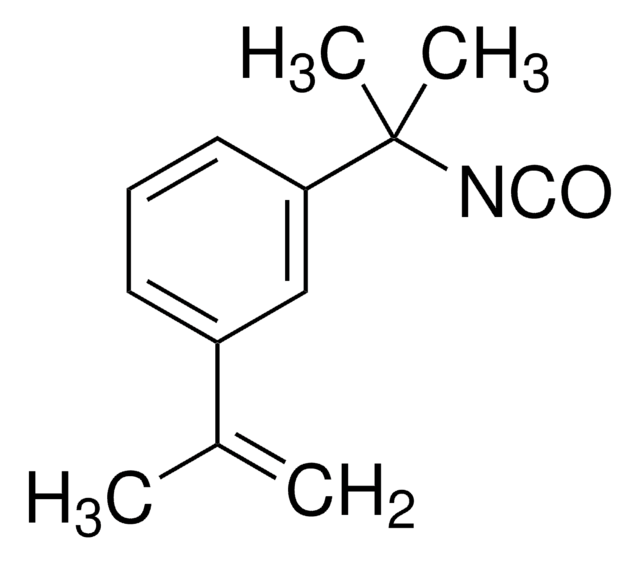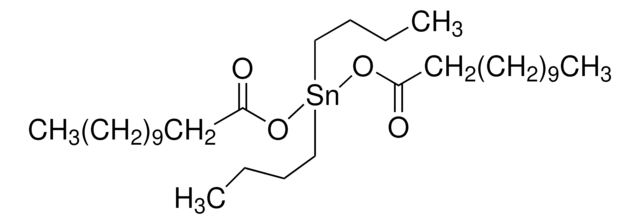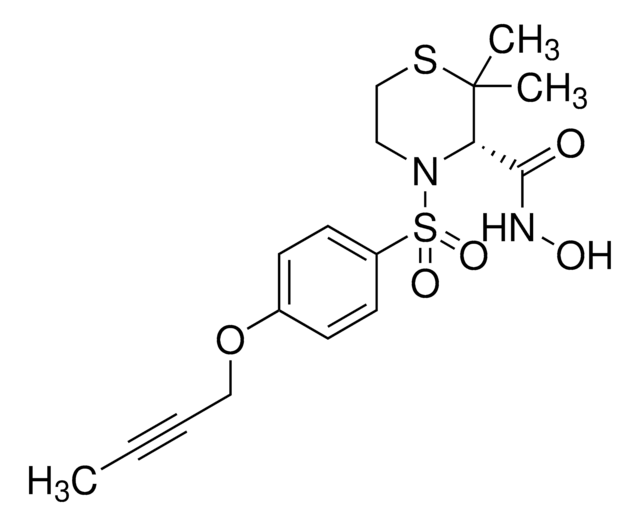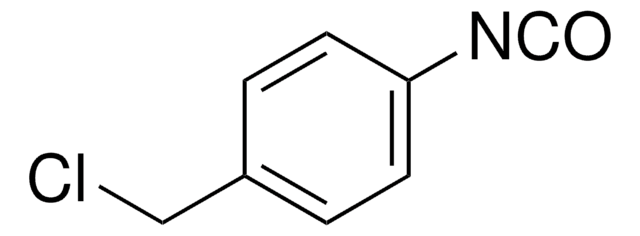477060
2-Isocyanatoethyl methacrylate
contains ≤0.1% BHT as inhibitor, 98%
Sinônimo(s):
2-(Methacryloyloxy)ethyl isocyanate, IEM
About This Item
Produtos recomendados
Ensaio
98%
contém
≤0.1% BHT as inhibitor
índice de refração
n20/D 1.45 (lit.)
p.e.
211 °C (lit.)
pf
−45 °C (lit.)
densidade
1.098 g/mL at 25 °C (lit.)
temperatura de armazenamento
2-8°C
cadeia de caracteres SMILES
CC(=C)C(=O)OCCN=C=O
InChI
1S/C7H9NO3/c1-6(2)7(10)11-4-3-8-5-9/h1,3-4H2,2H3
chave InChI
RBQRWNWVPQDTJJ-UHFFFAOYSA-N
Procurando produtos similares? Visita Guia de comparação de produtos
Descrição geral
Aplicação
- A reactive monomer in the synthesis of poly(methyl urethane) acrylate oligomer for UV-curable coatings. By incorporating urethane and acrylate groups into the polymer, it enables the polymer to be utilized in UV-curable coatings, inks, and adhesives.
- An additive in propylene carbonate-based electrolyte to enhance its properties, such as viscosity, conductivity, and stability. This improves the overall performance of the electrolyte and the battery.
- As a modifier in the copolymerization process to prepare a bioprosthetic heart valve, which is used in the application of transcatheter aortic valve replacement.
- A latent cross-linker for adhesive resins and coatings.
Palavra indicadora
Danger
Frases de perigo
Declarações de precaução
Classificações de perigo
Acute Tox. 1 Inhalation - Acute Tox. 4 Oral - Eye Dam. 1 - Resp. Sens. 1 - Skin Irrit. 2 - Skin Sens. 1
Código de classe de armazenamento
6.1A - Combustible acute toxic Cat. 1 and 2 / very toxic hazardous materials
Classe de risco de água (WGK)
WGK 3
Ponto de fulgor (°F)
210.2 °F - closed cup
Ponto de fulgor (°C)
99 °C - closed cup
Escolha uma das versões mais recentes:
Já possui este produto?
Encontre a documentação dos produtos que você adquiriu recentemente na biblioteca de documentos.
Os clientes também visualizaram
Nossa equipe de cientistas tem experiência em todas as áreas de pesquisa, incluindo Life Sciences, ciência de materiais, síntese química, cromatografia, química analítica e muitas outras.
Entre em contato com a assistência técnica













